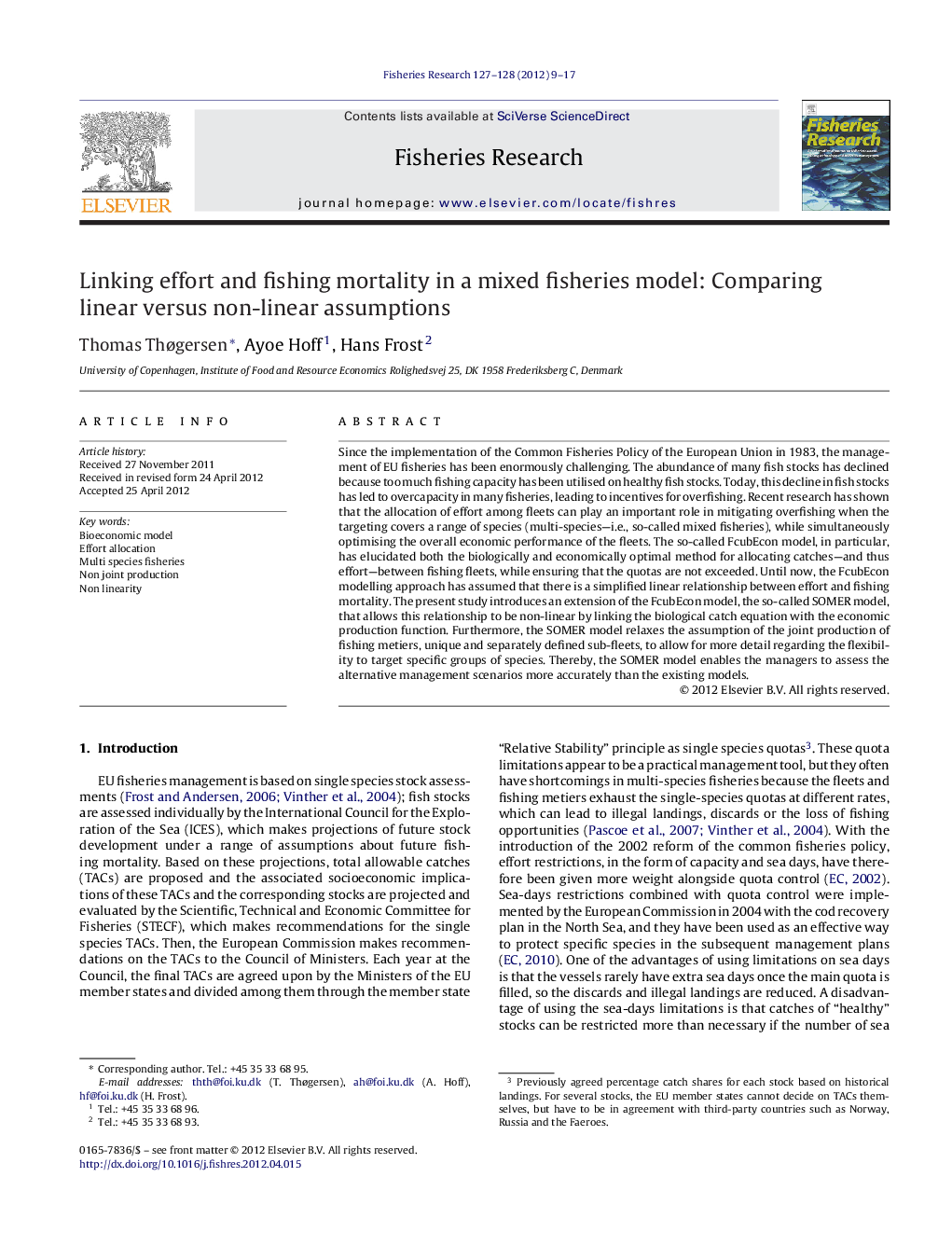| کد مقاله | کد نشریه | سال انتشار | مقاله انگلیسی | نسخه تمام متن |
|---|---|---|---|---|
| 4543334 | 1626835 | 2012 | 9 صفحه PDF | دانلود رایگان |

Since the implementation of the Common Fisheries Policy of the European Union in 1983, the management of EU fisheries has been enormously challenging. The abundance of many fish stocks has declined because too much fishing capacity has been utilised on healthy fish stocks. Today, this decline in fish stocks has led to overcapacity in many fisheries, leading to incentives for overfishing. Recent research has shown that the allocation of effort among fleets can play an important role in mitigating overfishing when the targeting covers a range of species (multi-species—i.e., so-called mixed fisheries), while simultaneously optimising the overall economic performance of the fleets. The so-called FcubEcon model, in particular, has elucidated both the biologically and economically optimal method for allocating catches—and thus effort—between fishing fleets, while ensuring that the quotas are not exceeded. Until now, the FcubEcon modelling approach has assumed that there is a simplified linear relationship between effort and fishing mortality. The present study introduces an extension of the FcubEcon model, the so-called SOMER model, that allows this relationship to be non-linear by linking the biological catch equation with the economic production function. Furthermore, the SOMER model relaxes the assumption of the joint production of fishing metiers, unique and separately defined sub-fleets, to allow for more detail regarding the flexibility to target specific groups of species. Thereby, the SOMER model enables the managers to assess the alternative management scenarios more accurately than the existing models.
► We present a North Sea, multi-fleet and multi-species effort allocation model.
► We combine traditional biological and economic approaches to fisheries.
► We assume a non-linear relationship between effort and fishing mortality.
► We assume a non-joint production technology.
► We find that model assumptions have major impact on fleet profits.
Journal: Fisheries Research - Volumes 127–128, September 2012, Pages 9–17